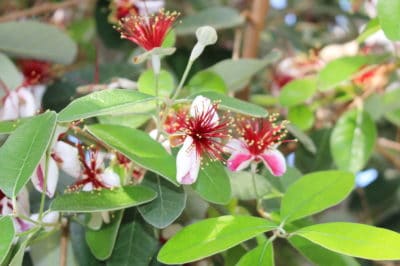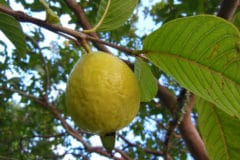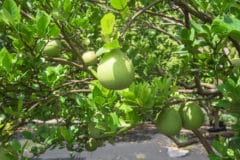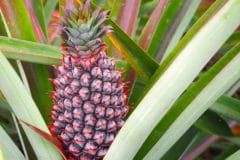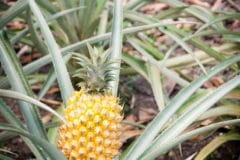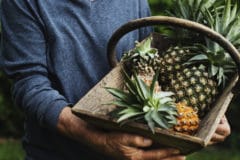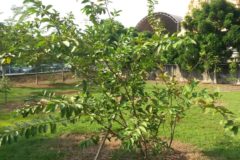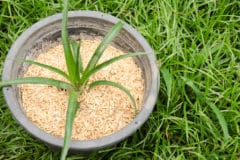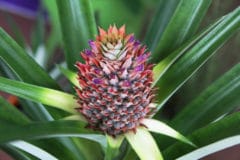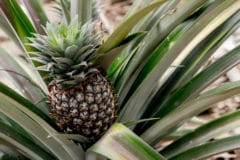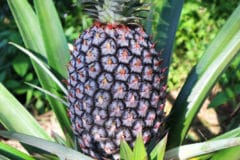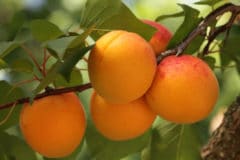About the Pineapple Guava
Pineapple guava is a shrub or small tree with striking flowers and one- to four-inch gray-green fruits. The flowers have a cluster of red stamens arranged in a fountain shape over recurved petals of pink and white. Fruits have amber-colored flesh with a flavor that combines pineapple and papaya. The tree blooms in May and June; fruits ripen about five or six months later.
Choosing A Pineapple Guava Variety
Several varieties of pineapple guava are available for the home gardener, mostly self-fruitful. They include:
- Coolidge – most widely available, heavy crops.
- Nazemetz – superior flavor and large fruit.
- Trask – excellent flavor, large fruit. Needs a pollinator; Nazemetz is a good choice.
- Pineapple Gem – smaller fruit but very tasty.
Climate and Hardiness
Pineapple guava is much more widely adapted than many tropical fruits. It can handle temperatures ranging from 10 to 110 °F (-12 to 43°C). In fact, the fruit has a better taste when exposed to freezing temperatures for a short time. This makes it easy to grow in USDA Zones 8 to 11, and some varieties will even grow in Zone 7.
Growing Conditions
Pineapple guavas are generally tough plants once established. They prefer a rich soil that is alkaline to slightly acid and need both good fertility and good drainage. Drought tolerant once they have developed adequate root mass, they also respond to watering but don’t like water-logged soil. The tree often suffers in areas of high humidity.
Pruning Pineapple Guava
Pineapple guava is very flexible – it makes a good single-trucked patio tree, and can be shaped into a hedge or espalier, or allowed to be a shrubby background plant. Although it’s best to prune in winter, you can trim at any time if necessary. For a hedge, place the plants between three and five feet apart. Pinch or trim back to encourage bushiness and top at the desired height. Heavy pruning may decrease fruit production.
Harvesting Fruit
Pineapple guava is one of those fruits that really should ripen on the tree. The color will gradually change from gray-green to deep green or reddish-brown. As the fruit ripens, it will become more aromatic. Fruit usually ripens in November or December. The fruit will drop to the ground when fully ripe and should be picked up immediately and refrigerated. Pineapple guava will only store for about a week.
